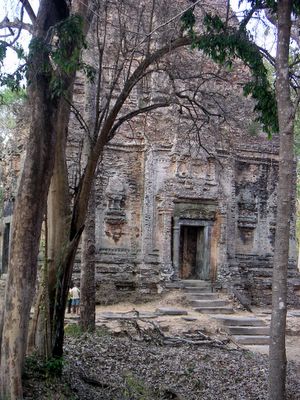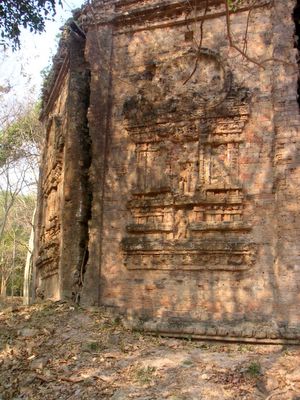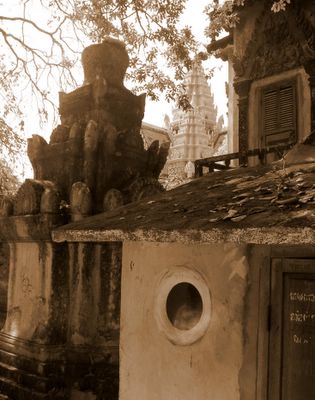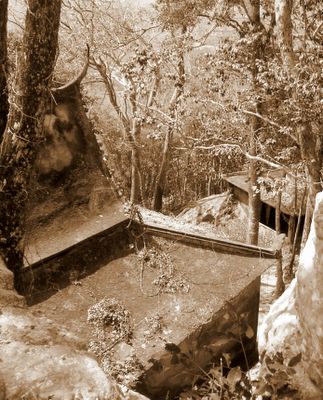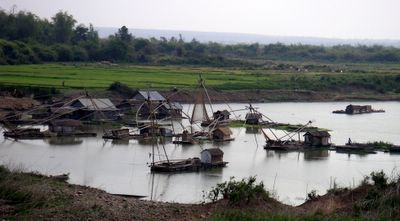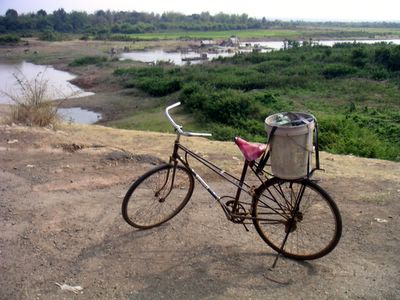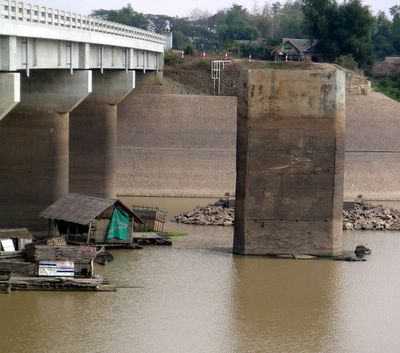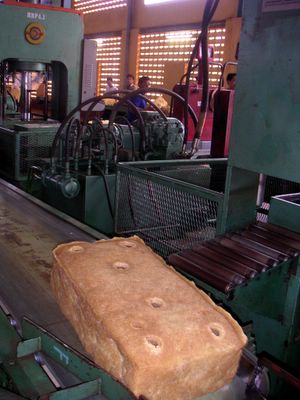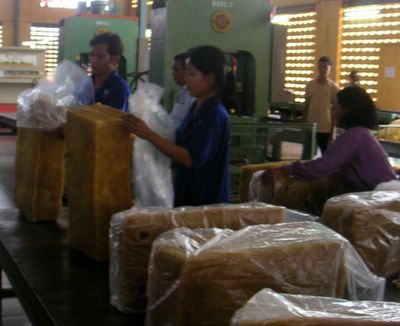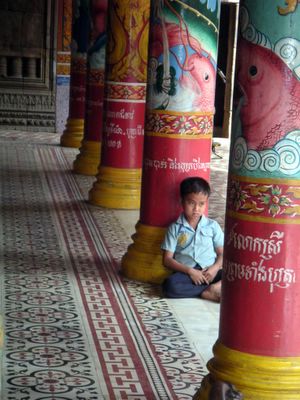Our tour party is loaded into a bus for the trip to Kampong Thom, but along the way we make quick stop at 74km from Phnom Penh, at Skoun.
This is Spiderville.
Skoun is famous for it's roast and fried spiders. The local delicacy is abundant in the Central Market, although we did not need to hunt there for an opportunity to sample these wares. Within seconds from alighting from the bus, hordes of vendors descended to ply their trade.
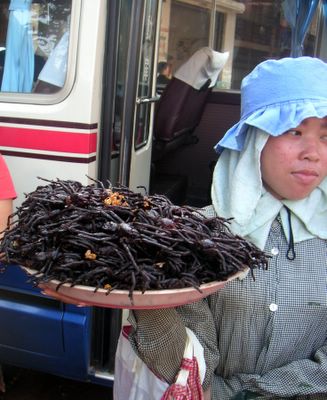 Copyright Tan and Trev 2005
Copyright Tan and Trev 2005On this item, Tan had laid down the law before we left Melbourne. At no point would she be sampling a bug. In fact, she planned make it clear to all fellow travellers that her leanings towards vegetarian cuisine would be somewhat stronger this trip than perhaps in previous years. “You might want to tell people you are a vegetarian too,” she suggests. Nah, why change the diet for the entire trip just to avoid fried arachnid?
It was not possible to get a clear picture from our guide as to what spider might taste like. Karen had previously been offered a leg, but the memory clearly repulsed her and she was not keen to relive the experience. She indicated that these edible insects are meant for the adventurous, as an anthropological and cultural experience.
For those who never tried them, apparently they taste creamy and can be very addictive. They are eaten like a crunchy appetizer or snack only.
 Copyright Tan and Trev 2005
Copyright Tan and Trev 2005In reality, they looked neither appetizing nor crunchy. Surrounded by plates of deep fried insects, I couldn’t help thinking how oily they looked.
They were also a puzzling assortment. In among the trays of large edible tarantula (also known as "ka ping" in Khmer) there seemed to also be spiders with four-legs spider. At the time I just wondered if they were damaged goods: eight-leggers that had been randomly sampled or just knocked-about. But I’ve read in blogs elsewhere that others too have seen the four-legged comestibles on offer by these five girls.
So I started to look around for a snaking partner. Someone with whom I could start the bluffer’s game of: “I will, if you will”. I sized up Amy as being the most likely other candidate in our group to be adventurous enough to give this culinary caper a try. Next I started fumble about for change – unsure as to how much one should pay for fried bugs. But all this mental procrastination only served to prove the old adage that “he who hesitates is lost”.
Suddenly there is a shriek. It starts a stampede as several in our tour group quickly scamper back to the “safety” of the tour bus. In the confusion I wonder what could have brought trade to such a sudden halt, even before it has begun.
Then I spot it. One of the hawkers has revealed a live spider and proudly wears it like a brooch as if it were a pin of honour. Had this been a snake, I probably would have been racing back to the bus. But the live spider doesn’t worry me. I have time to take a few pictures before climbing aboard the bus where Amy and I instantly realise we have missed an opportunity to taste spider.
 Copyright Tan and Trev 2005
Copyright Tan and Trev 2005I make a mental note not to repeat such an opportunity again on this trip. And although it is not spider, I get to sample some other bug a few days later. (But that is a story for another day).
